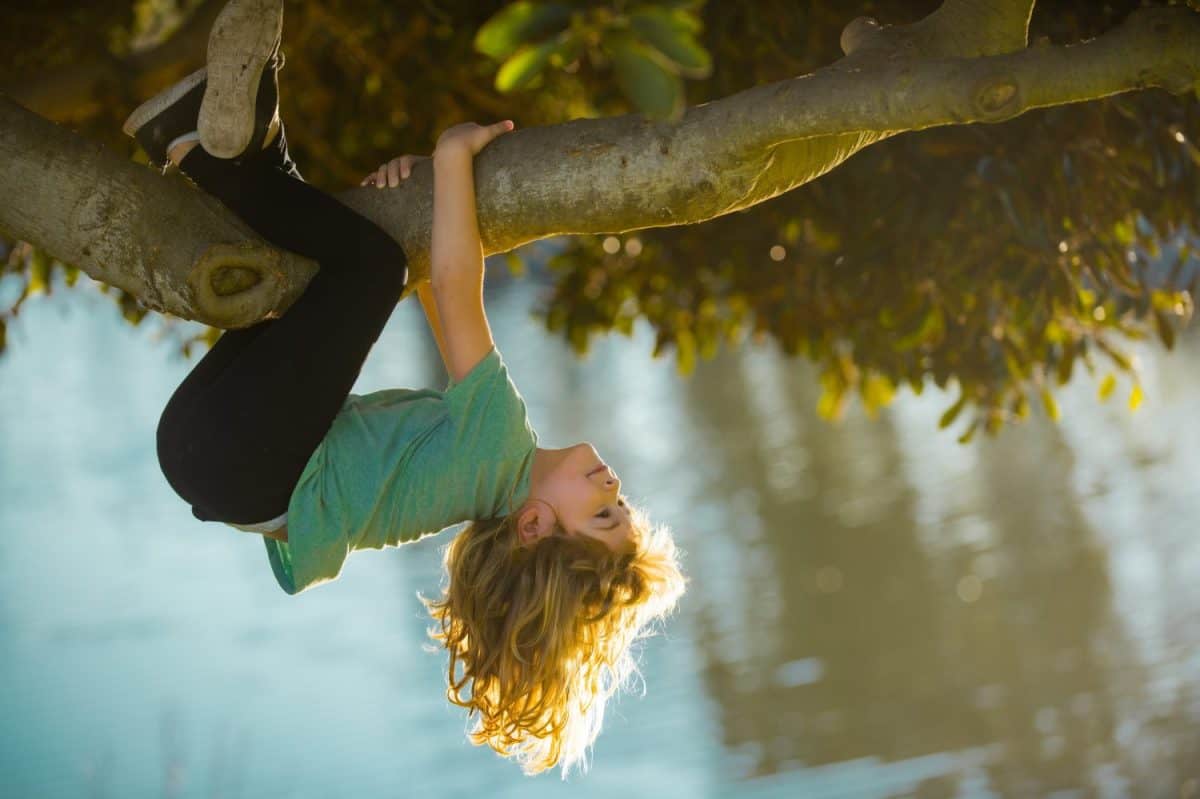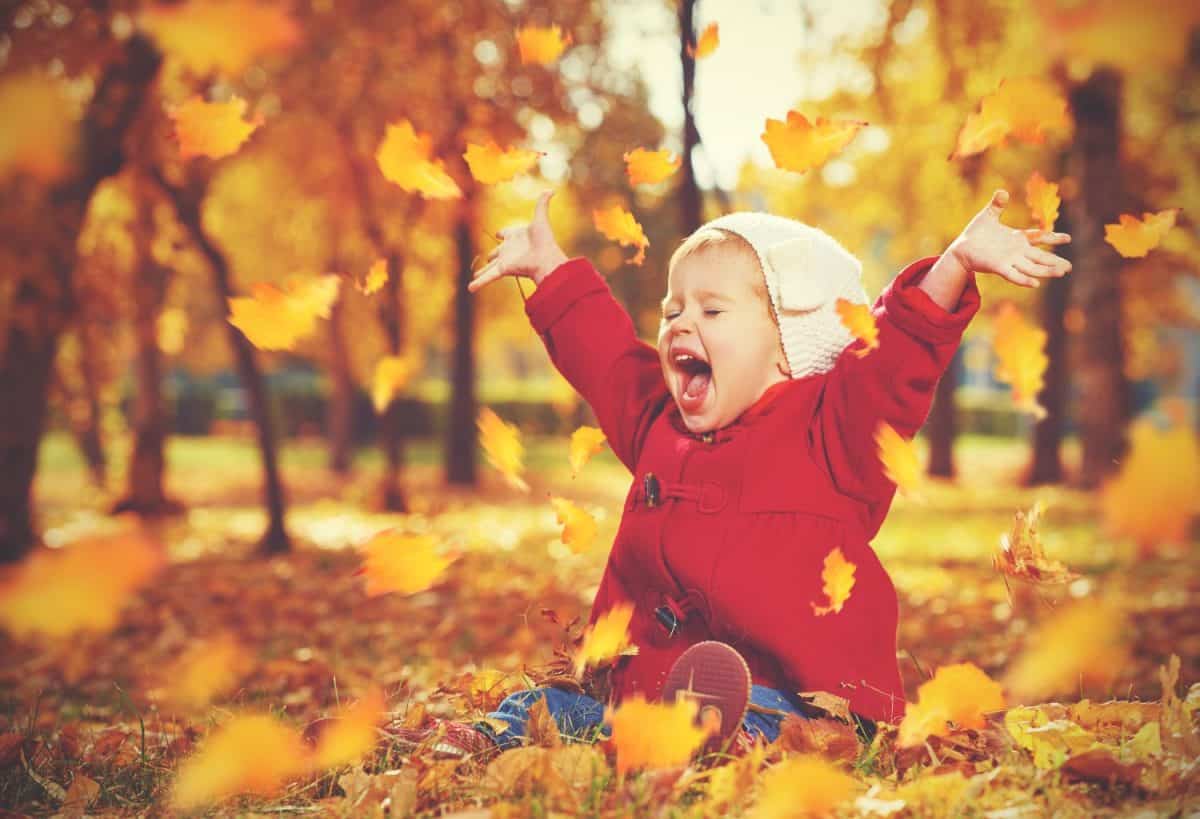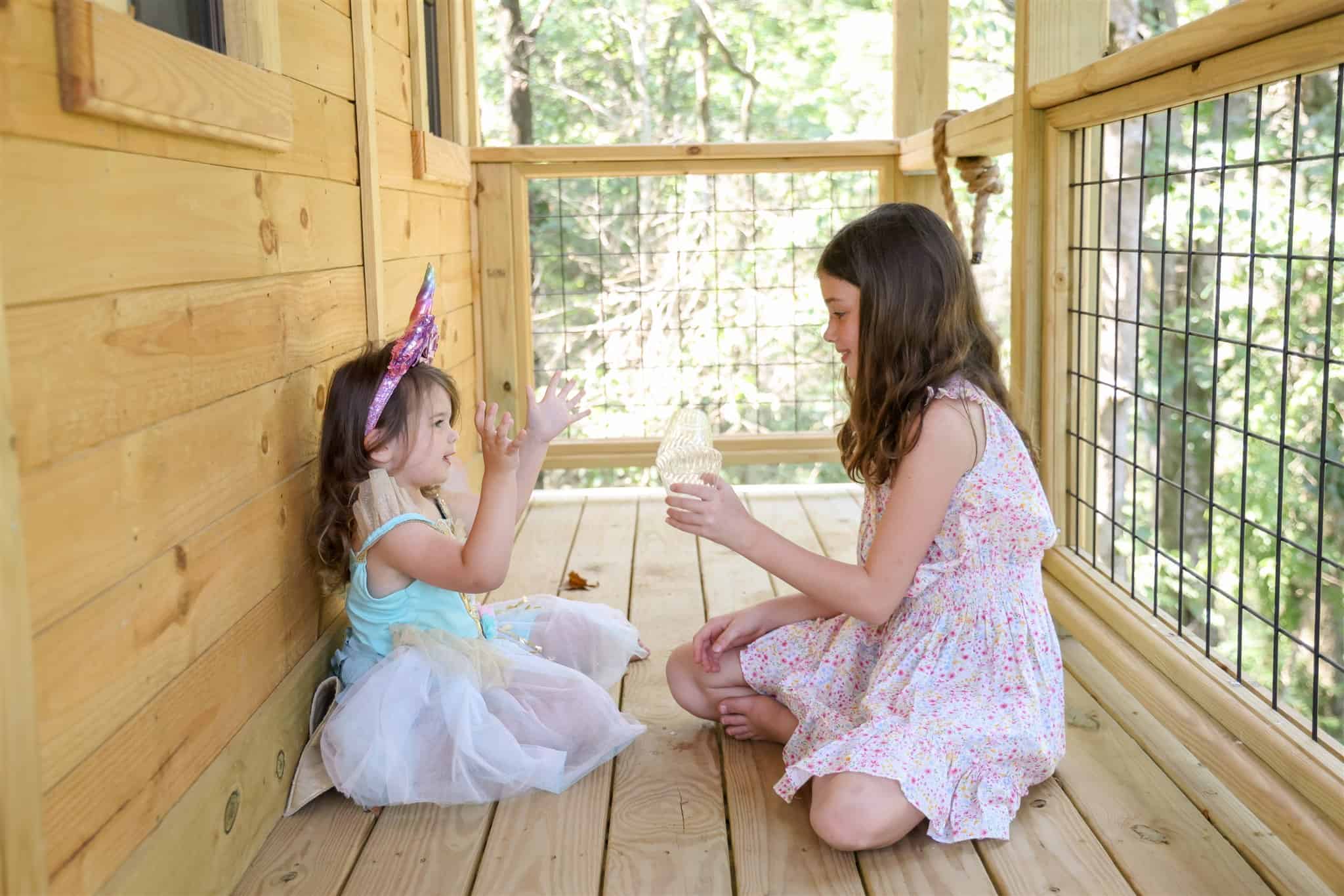In an era of constant screen time, it's more important than ever to get kids outside, interacting with others and using their imaginations. One great way to encourage them to do so is by building a treehouse. If you have a tree or even just a yard, you can construct a spot – as simple or intricate as you desire — to give your kids a place of their own, and it may have several benefits you haven't even thought of.
According to Treehouse Guides, a company that constructs treehouses, there are a lot of advantages for children having a treehouse in their yard. We talked to some experts in this space to find out more about what those advantages are.
Why You Should Build With Your Children

©Volodymyr TVERDOKHLIB/Shutterstock.com
Whether you hire a company to build the tree fort or you do it yourself, you can consult with your child on the design and what goes into it. You'll want to start with the tree itself (or constructing the platform if you don't have a good-sized tree in your yard). Where will the treehouse go? How high does your child want it, and will you need to compromise height for safety and/or feasibility of building? Once you decide on the location, you'll have to think about size and shape. These all help kids think about the logistical aspects of building and perhaps incorporate a bit of STEAM.
Once you've determined location, size and shape, your kids can really get creative with the design. Decide whether or not the treehouse will have a roof and if you're going to paint it or leave it natural. If your kid knows what they might play in the tree house, you might be able to build in aspects related to the play, like tables for tea parties or playing cards, or a chalkboard for drawing. Seeing their vision come into reality creates a sense of agency in children that can be good for them as they grow up, says Jordan Conrad, Founder and Clinical Director at Madison Park Psychotherapy.
“You can show them that the things in their head — their dreams and imaginary ideas — can come true and, crucially, that they have what it takes to make them come true,” Conrad says. “That is an incredible gift that many children don't get.”
Keith Maddin, owner of Firefly Forts Nashville, says that even though her company builds a fort, the kids for whom it's being built really get to make it their own. “Involving children in designing their fort boosts creativity and ownership,” she says. “They can choose fun features like rock walls for climbing, rope swings, secret doors for added mystery, and slides for quick escapes. Mailboxes offer a means for parents to communicate when the NO ADULTS ALLOWED policy is in effect, while lookout towers enhance playtime with a higher view, sparking a sense of adventure.”
With this type of buy-in, no two tree forts will be exactly the same based on a child's preferences and specifications. This is part of the magic of a tree fort.

“Tree forts create awesome spaces that spark kids’ imaginations and encourage them to dive into fun, creative play,” explains Keith Maddin, owner of Firefly Forts Nashville and pictured here in one of her tree forts.
©Leila Grossman / Grannis Photography
Physical Activity For the Win
Even just the action of climbing up and down from a tree fort is a physical activity. This, combined with any other games your child comes up with to play inside and outside of their fort, can provide hours of additional movement for kids. Kids can develop gross motor skills, lower obesity, reduce myopia, and get Vitamin D from playing outside, according to an article on healthychildren.org.
“Tree forts require coordination, balance, and more opportunities for active play,” Maddin explains. “Bedrooms and playrooms are great for reading and board games, but a tree fort gives children the opportunity for more active play.”
Boost Their Social and Imaginative Play
When a child has a tree house, it's a place where their rules apply and can change at any time. This is different from playing inside, where the house is owned by the grown-ups, and adults can listen in and intervene at any time, Conrad says.
“When you are outside, those rules don't really apply. Parents don't tell you to stop running around, or that you are going to break something. They don't tell you to stop playing with that stick, or that you're laughing too much,” he says. “Outside is a kid's space. So even if your treehouse doesn't have a door, or even a roof, having it be outside gives your child a sense that it is really for them — that they make the rules.”
For little kids, this may mean playing make-believe and negotiating the story and what roles each child plays. For older kids, it might be making up their own rules for a card game or board game. They may even want to try out some of our favorite outdoor games for kids. Either way, play in a treehouse happens in real-time instead of via digital communication, which means kids have to learn to handle social situations on their own.
“That is something that has been lost in the digital age, where kids largely communicate by text (not in real-time) and where parents intervene to resolve almost every problem,” Conrad says. “Having this space that feels like it is just theirs can feel like a space to be a grown-up.”
The Sensory and Mental Health Benefits of Being Outside

©Evgeny Atamanenko/Shutterstock.com
Kids are inside for most of the six- to eight-hour school day, five days a week, 40 weeks out of the year. But experts know that being outdoors is really good for kids. From a sensory perspective, they can feel, touch and smell many different things outside. This helps the littlest of kids learn gross motor skills and develop their senses.
It's also good for kids' mental health: Kids who spend time outdoors are proven to be happier and less anxious than kids who stay indoors most of the time. For children with ADHD, studies have also shown that even a little bit of time outside each day can help them function better.
Treehouse Academics
From building the structure to getting in and out of the treehouse to observing nature from the trees, kids can gain a lot of academic benefits that aren't the kind of things you learn in a classroom. You'll have to figure out how and where to place the treehouse. Then, you have to learn how to get in and out of it safely. You'll see different leaves, birds, and elements of weather while playing in the treehouse. And you may have to learn to repair it as it ages. Many of these processes teach kids problem-solving skills that can't be simulated in a classroom or on a screen.
“Playing among the trees lets kids explore nature and sparks their creativity with leaves, sticks, and wildlife — all part of their magical adventures! Tree forts create awesome spaces that spark kids’ imaginations and encourage them to dive into fun, creative play,” Maddin says. “This not only makes their playtime more exciting but also helps them grow and develop important social and thinking skills.”
So if you have the space and have been considering a treehouse, think of all the benefits it may have for your kid. You can build it yourself, or hire a builder to help you out. Just don't lose sight of the joy, fun and benefits of creating this magical space for your family.
The image featured at the top of this post is ©Leila Grossman / Grannis Photography
